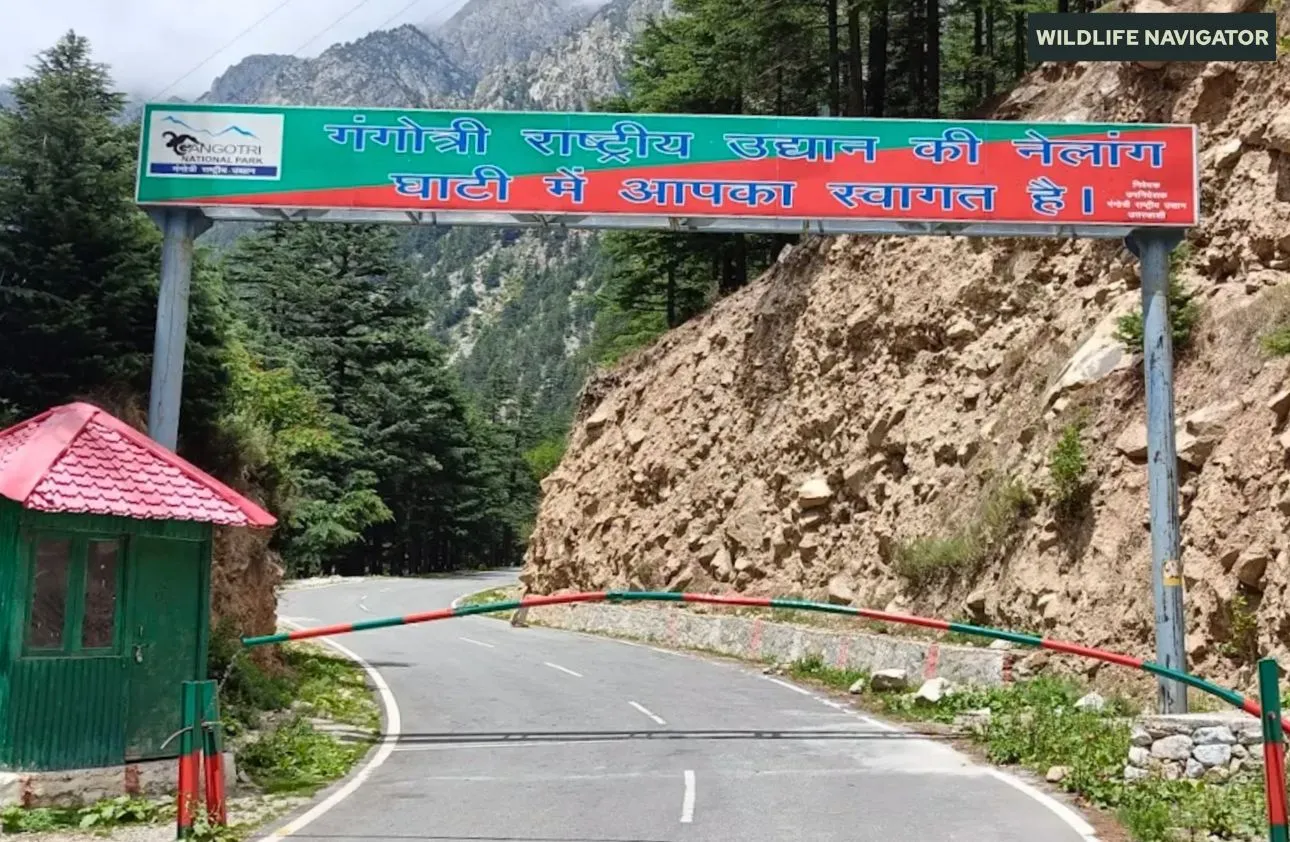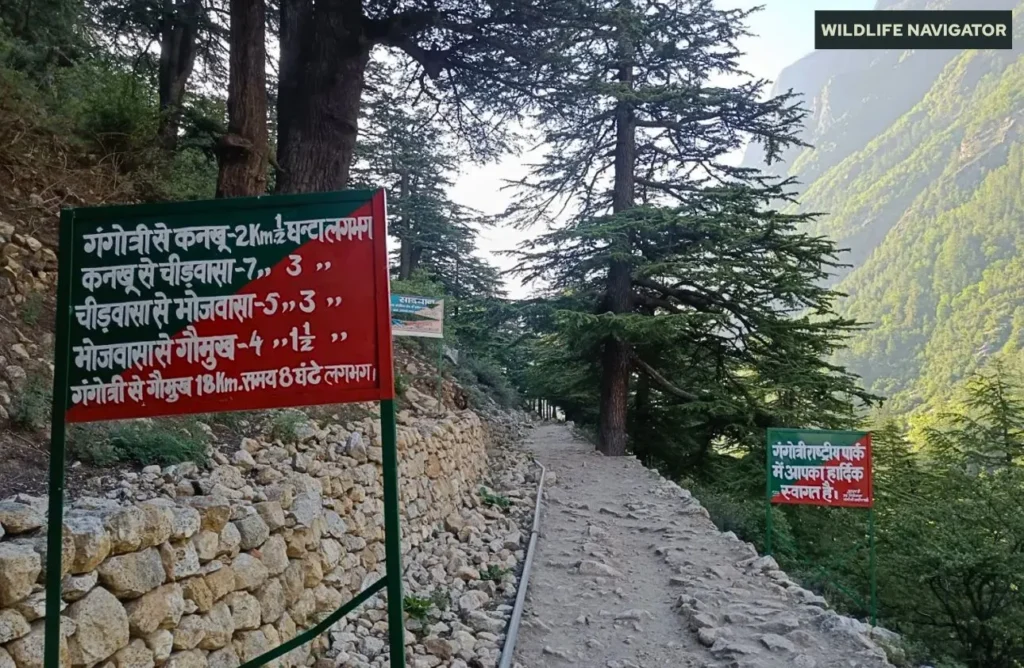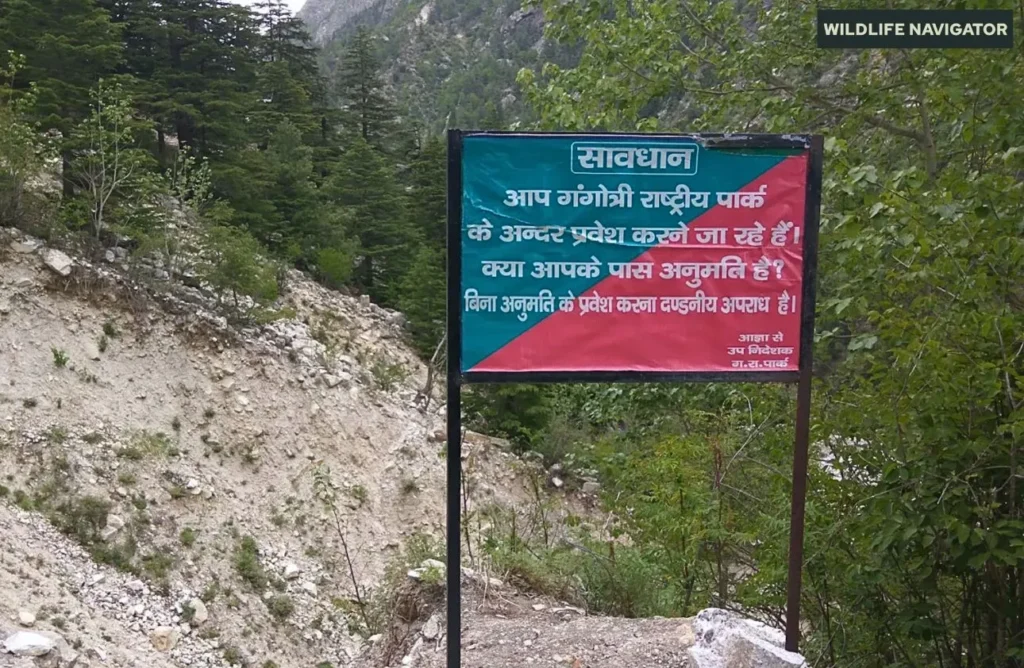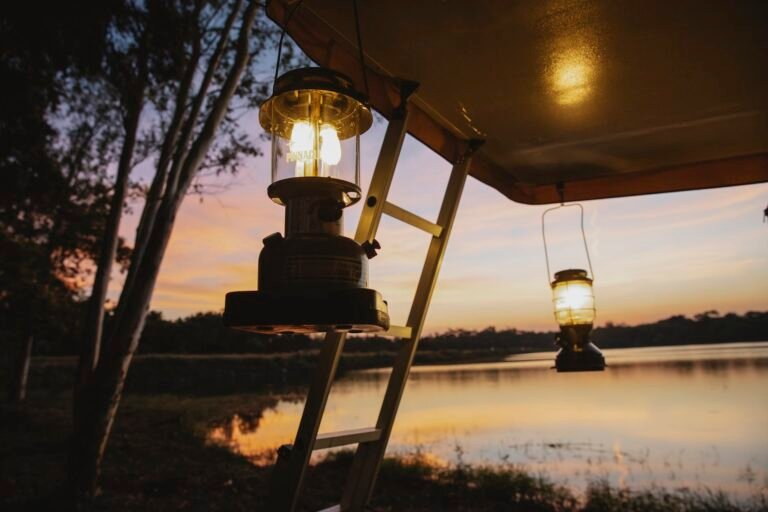Gangotri National Park – Uttarkashi, Uttarakhand

Gangotri National Park is one of India’s most spectacular high-altitude wilderness regions, stretching across the rugged terrains of the Uttarkashi district in Uttarakhand. Covering more than 2,390 sq km, this vast Himalayan landscape is best known for housing the Gaumukh Glacier, the primary source of the holy River Ganga. Its immense spiritual significance blends beautifully with its ecological richness, making it a rare destination where nature, culture, and adventure meet.
The park lies in the upper catchment of the Bhagirathi River and showcases a dramatic mix of towering snow-clad mountains, deep gorges, alpine meadows, and pristine glaciers. Gangotri National Park supports diverse Himalayan flora and fauna specially adapted to survive extreme altitudes and cold climates—most notably the elusive snow leopard, Himalayan tahr, musk deer, and a wide variety of high-altitude birds.
For trekkers, pilgrims, nature lovers, and wildlife enthusiasts, the park offers an unforgettable experience. Whether it’s walking through ancient pine forests, witnessing the first light fall on mighty peaks like Shivling and Bhagirathi, or trekking up to the glacier snout at Gaumukh, Gangotri National Park is a place where every view feels sacred, powerful, and awe-inspiring.
Geography and Landscape
Terrain & Elevation
Gangotri National Park spans a dramatic high-altitude terrain ranging from about 1,800 meters to over 7,000 meters above sea level. The landscape shifts rapidly—from dense coniferous forests in the lower regions to open alpine meadows and barren snowfields as you climb higher. The park forms part of the Greater Himalayas, known for steep ridges, glaciated valleys, and jagged mountain peaks that dominate the skyline.
Glaciers & Major Rivers
The park is home to some of the most important Himalayan glaciers, especially the Gaumukh Glacier, one of the largest in the Indian Himalayas and the birthplace of the River Ganga (Bhagirathi). Other glaciers, such as Kedar, Raktavarn, and the Gangotri Glacier system, feed several tributaries, creating a network of crystal-clear streams and rivers that nourish both wildlife and human settlements downstream.
Climate Zones
Due to its huge altitudinal range, the park features a variety of climate zones—from sub-alpine conditions with cool summers to alpine and nival zones where the temperature stays extremely cold for most of the year. Winters are harsh, with heavy snowfall cutting off many trails, while summers offer brief but vibrant bursts of life with blooming wildflowers and active wildlife.
Unique Himalayan Ecosystems
Gangotri National Park preserves some of the last undisturbed high-altitude ecosystems in India. Its habitats include rocky cliffs, moraines, riverine belts, and lush bugyals (meadows). The combination of glaciers, forests, and alpine environments creates a unique biodiversity hotspot where rare species thrive despite harsh conditions.
Flora of Gangotri National Park
Gangotri National Park hosts a breathtaking variety of high-altitude vegetation, shaped by steep elevation gradients and extreme Himalayan climates. The lower regions are dominated by dense coniferous forests, while the mid-altitudes open into spacious sub-alpine woods, and the upper stretches transform into windswept alpine meadows known as bugyals. These meadows burst into colour during summer, creating one of the most visually stunning landscapes in the region.
The harsh winters, intense UV radiation, and low oxygen levels restrict plant growth at higher altitudes, yet a surprising number of plants—especially medicinal herbs—have adapted remarkably well. Many of these species hold ecological, cultural, and medicinal significance.
Key Plant Species Found in the Park:
Sub-Alpine & Temperate Forests:
- Blue Pine (Pinus wallichiana)
- Deodar Cedar (Cedrus deodara)
- Fir (Abies pindrow)
- Spruce (Picea smithiana)
- Horse Chestnut (Aesculus indica)
Alpine & High-Altitude Flora:
- Juniper (Juniperus recurva)
- Birch / Bhojpatra (Betula utilis)
- Rhododendron (Rhododendron campanulatum)
- Dwarf Willow (Salix spp.)
- Saxifrage species
Medicinal & Aromatic Plants:
- Brahma Kamal (Saussurea obvallata) – iconic Himalayan flower
- Dhoop (Jurinea himalayensis)
- Kuth (Saussurea lappa)
- Kutki (Picrorhiza kurroa)
- Atees (Aconitum heterophyllum)
These species contribute to the ecological balance of the region, supporting herbivores at lower altitudes, stabilising soil on steep slopes, and supplying food and shelter to a range of wildlife.
Fauna of Gangotri National Park
Gangotri National Park is a haven for high-altitude wildlife, home to some of the rarest and most resilient species of the Himalayas. The steep cliffs, rocky outcrops, and alpine meadows provide ideal habitats for iconic mountain animals, especially those adapted to extreme cold and rugged terrain. The park is internationally recognised as an important conservation zone for the snow leopard, one of the world’s most elusive big cats.
Along with large mammals, the park supports a healthy population of high-altitude herbivores, high-flying raptors, colourful pheasants, and several smaller mammals that thrive across different elevation zones. Birdlife, especially, is vibrant during summer when migratory species arrive, and alpine flora is in full bloom.
Major Mammals in the Park:
- Snow Leopard (Panthera uncia)
- Himalayan Tahr (Hemitragus jemlahicus)
- Blue Sheep / Bharal (Pseudois nayaur)
- Musk Deer (Moschus chrysogaster)
- Serow (Capricornis thar)
- Himalayan Black Bear (Ursus thibetanus)
- Red Fox (Vulpes vulpes)
- Goral (Naemorhedus goral)
- Himalayan Weasel (Mustela sibirica)
Birds of Gangotri National Park:
- Himalayan Monal (Lophophorus impejanus)
- Snow Partridge (Lerwa lerwa)
- Golden Eagle (Aquila chrysaetos)
- Lammergeier / Bearded Vulture (Gypaetus barbatus)
- Western Tragopan (Tragopan melanocephalus)
- Snow Pigeon (Columba leuconota)
- Himalayan Griffon Vulture (Gyps himalayensis)
- Koklass Pheasant (Pucrasia macrolopha)
Other Wildlife:
- Pikas (Ochotona spp.)
- Himalayan Marmot (Marmota himalayana)
- Woolly Hare (Lepus oiostolus)
- High-altitude reptiles (limited due to cold climate)
These species represent the park’s rich biodiversity and highlight its role as a critical stronghold for Himalayan wildlife conservation.
Major Attractions & Natural Highlights
Gangotri National Park is not only a biodiversity hotspot but also a visually stunning region filled with glaciers, sacred sites, high-altitude meadows, and dramatic Himalayan peaks. Whether you’re a trekker, pilgrim, photographer, or nature lover, the park offers landscapes that feel untouched, powerful, and deeply spiritual.
Gaumukh Glacier
The star attraction of the park, Gaumukh, is the snout of the Gangotri Glacier and the origin of the River Bhagirathi (Ganga). Surrounded by towering peaks and pristine ice formations, Gaumukh is both a sacred pilgrimage destination and a rewarding trekking spot.
Tapovan & Nandanvan
These high-altitude meadows lie above Gaumukh and are famous for their surreal beauty. Tapovan is known for its golden meadows, crystal-clear streams, and its stunning view of Mount Shivling, while Nandanvan offers panoramic views of the Bhagirathi Peaks. Both are major highlights of the Gaumukh–Tapovan trek.
Gangotri Temple
Located just outside the park boundary, this iconic temple dedicated to Goddess Ganga is one of the four main Char Dham pilgrimage sites. The presence of the temple adds immense spiritual significance to the region.
Kedar Tal
A sapphire-blue glacial lake tucked at high altitude, Kedar Tal is set amidst towering peaks like Thalay Sagar and Brigupanth. The trek to this lake is challenging but incredibly rewarding.
Scenic Valleys & Meadows
Places like Bhojbasa, Chirbasa, and the vast Bugyal meadows offer breathtaking landscapes dotted with birch groves, wildflowers, and panoramic Himalayan views.
Snow-Clad Peaks
The park provides spectacular views of some of the most magnificent Himalayan peaks, including:
- Mount Shivling
- Bhagirathi I, II & III
- Thalay Sagar
- Sudharshan Parbat
These peaks make the park one of the most photogenic Himalayan destinations.
Trekking & Adventure Activities

Gangotri National Park is a dream destination for trekkers and adventure seekers. Its rugged Himalayan terrain, glacial valleys, pristine rivers, and sweeping meadows offer some of the most rewarding trekking routes in India. Most treks here range from moderate to challenging, making them ideal for those who love high-altitude adventures and raw mountain landscapes.
Gaumukh–Tapovan Trek
The most iconic trek in the region, this route takes you from Gangotri to the snout of the Gangotri Glacier and further up to Tapovan.
Highlights include:
- The revered Gaumukh Glacier
- Stunning sunrise views on Mount Shivling
- Meadows bursting with alpine flowers
- Pristine streams and high-altitude wildlife sightings
Kedar Tal Trek
A more challenging and steep trek that leads to the mesmerising Kedar Tal, a glacial lake with crystal-clear waters reflecting mighty peaks like Thalay Sagar.
Best for: Experienced trekkers seeking solitude and dramatic scenery.
Bhojbasa & Chirbasa Trek
For beginners and casual hikers, the trek to Chirbasa (forests of Chinar/Bhoj trees) and Bhojbasa (birch meadows) offers a gentler introduction to high-altitude trekking.
Why it’s popular:
- Relatively easier path
- Great views of the Bhagirathi peaks
- Wildlife and birdwatching opportunities
Nandanvan Trek
An extension of the Gaumukh route, leading to a high-altitude meadow with spectacular panoramic views of the Himalayas.
Perfect for: Adventure lovers seeking offbeat glacial landscapes.
Best Time for Trekking
- May to June and September to October are ideal.
- Monsoon months are risky due to landslides.
- Winter treks are not recommended as heavy snowfall blocks trails.
Permits & Safety Guidelines
- Trekking inside the park requires a permit from the Forest Department.
- Hiring a registered guide is strongly recommended for glacier routes.
- Acclimatisation is essential due to high altitude.
- Carry enough warm clothing, food, and water; facilities are limited in higher regions.
- Maintain strict eco-friendly practices as it is a fragile Himalayan ecosystem.
Best Time to Visit
Gangotri National Park experiences extreme weather due to its high altitude, so choosing the right season is essential for a comfortable and safe visit. The park opens to visitors only during specific months when the trails are accessible and weather conditions are favorable.
Summer (May to June)
This is the most popular season to visit.
- Snow begins to melt, opening major trekking routes.
- Wildflowers bloom across the alpine meadows.
- Clear skies offer breathtaking views of the Himalayan peaks.
Ideal for: Trekking, wildlife sightings, landscape photography, and pilgrim visits.
Monsoon (July to August)
The monsoon brings heavy rainfall and frequent landslides in the region.
- Trails become slippery and dangerous.
- Trekking is discouraged.
Not recommended for general travel.
Post-Monsoon / Autumn (September to October)
One of the best seasons for trekking and outdoor activities.
- Skies are clear with crisp mountain air.
- Alpine vegetation turns golden, creating gorgeous landscapes.
- Gaumukh, Tapovan, and Kedar Tal treks are most rewarding at this time.
Ideal for: Trekkers, nature lovers, and photographers.
Winter (November to April)
The park remains largely inaccessible due to heavy snowfall.
- Temperatures drop well below freezing.
- Most trails, campsites, and forest routes remain closed.
Restricted season with no regular tourist access.
Overall Best Months:
May–June and September–October are the most recommended for visiting Gangotri National Park.
How to Reach Gangotri National Park
Reaching Gangotri National Park involves a combination of air, rail, and road travel, with the final stretch covered by scenic mountain roads. The park is accessible from Gangotri town, which serves as the main entry point for treks and permits.
Nearest Airport
Jolly Grant Airport, Dehradun (approx. 250 km from Gangotri).
- Well-connected to major cities like Delhi, Mumbai, Bengaluru, and Kolkata.
- From Dehradun, travellers must continue by road to Uttarkashi and then to Gangotri.
Nearest Railway Station
Dehradun Railway Station and Rishikesh Railway Station are the closest major railheads.
- Both stations have frequent trains from Delhi and other major Indian cities.
- From here, taxis and buses are available toward Uttarkashi and Gangotri.
By Road
Gangotri is well-connected by a network of mountain roads:
- Dehradun → Uttarkashi → Harsil → Gangotri
- Rishikesh → Chamba → Uttarkashi → Gangotri
Government and private buses operate up to Uttarkashi and Harsil, while shared jeeps and taxis run regularly to Gangotri during the open season.
Entry and permit fees

- For Indian citizens: ₹150 per person for a permit valid for two days. An additional ₹50 per person is charged for each extra day.
- For foreign nationals: ₹600 per person for a permit valid for three days. An additional ₹250 per person is charged for each extra day.
- Video Camera: The non-commercial video fee is ₹500.
- Camping equipment: You will need to pay for each tent you use. For example, a small two-person tent costs ₹50 for Indian nationals and ₹100 for foreign nationals.
How to get a permit
Visitors must obtain a permit to enter Gangotri National Park. The number of permits for trekking is limited to 150 per day.
- Permit offices: You can get a permit from the District Forest Officer (DFO) office in Uttarkashi or the permit office in Gangotri.
- Online application: You may be able to apply online through the single-window system for Uttarkashi.
Entry Gates & Check Posts
Visitors typically start treks from the Gangotri Forest Check Post, where you must register for entry.
- The Forest Department checks permits, IDs, and group details.
- For longer treks like Gaumukh–Tapovan, additional trekking registrations are required.
Accommodation Options
Gangotri National Park offers limited but comfortable stay options due to its high-altitude, eco-sensitive environment. Most accommodations are located around Gangotri town, while trekkers can stay in simple rest houses and campsites along the popular routes inside the park.
Forest Rest Houses (FRH)
The Forest Department maintains a few basic rest houses near Gangotri and along trekking trails.
Features:
- Simple rooms with basic amenities
- Scenic surroundings
- Limited availability—advance booking recommended
These rest houses provide an authentic Himalayan stay experience but may lack luxury facilities.
Campsites in the Park
Trekkers often stay at designated campsites such as:
- Chirbasa
- Bhojbasa
- Tapovan (for experienced trekkers only)
What to expect:
- Tented accommodation
- Minimal facilities
- Stunning natural surroundings
Campsites are best suited for trekkers and adventure travellers.
Lodges & Guest Houses in Gangotri Town
Gangotri town offers small lodges, guest houses, and dharamshalas catering to pilgrims and trekkers.
Typical amenities include:
- Basic rooms with clean bedding
- Hot water on request
- Simple vegetarian meals
- Easy access to the Gangotri Temple and trek starting points
Accommodation Tips
- Book early during peak season (May–June & Sept–Oct).
- Facilities become very limited beyond Gangotri town.
- Carry warm clothing even in summer; nights are cold.
- Power cuts are common, so pack power banks.
- Some higher campsites require you to carry your own tents through authorised trekking agencies.
Conservation Importance & Challenges
Gangotri National Park plays a crucial role in preserving some of India’s most fragile and ecologically significant Himalayan ecosystems. Its high-altitude forests, glaciers, and alpine meadows support rare species that are highly sensitive to climate change and human interference. As the origin region of the River Ganga, the park also holds immense environmental and cultural significance for millions of people downstream.
Protection of Snow Leopard Habitat
The park is part of the Western Himalayan Snow Leopard Conservation Landscape, making it a globally important stronghold for this elusive predator. Conserving the snow leopard helps protect the entire alpine ecosystem, including its prey species like blue sheep and Himalayan tahr.
Glacial Conservation & Climate Change Impact
Glaciers like Gaumukh, Gangotri, and Kedar are vital sources of freshwater.
However, rising temperatures have caused:
- Shrinking glaciers
- Altered meltwater patterns
- Risk of glacial lake outburst floods (GLOFs)
These changes pose serious challenges to biodiversity, river systems, and human settlements downstream.
Balancing Pilgrimage & Ecology
Gangotri is a major pilgrimage destination, attracting thousands of visitors every season. While culturally important, this brings:
- Increased waste generation
- Trail erosion
- Pressure on local resources
Strict regulations, limited entry permits, and awareness campaigns help maintain ecological balance.
Sustainable Tourism Initiatives
The Forest Department and conservation groups focus on:
- Restricting daily visitor numbers
- Mandatory registration for treks
- Promoting eco-friendly trekking practices
- Wildlife monitoring and anti-poaching patrols
- Community involvement in conservation activities
Challenges Ahead
- Rapid climate shifts at high altitudes
- Growing tourism pressure
- Vulnerability of rare plant species to overharvesting
- Limited accessibility for regular monitoring
Despite these challenges, Gangotri National Park remains one of the best-preserved high-altitude protected areas in India, thanks to strict conservation policies and ongoing scientific research.
Travel Tips for Visitors
Visiting Gangotri National Park requires preparation due to its remote location, high-altitude terrain, and unpredictable Himalayan weather. These practical tips will help ensure a safe, comfortable, and environmentally responsible trip.
Prepare for High Altitude
Much of the park lies above 3,000 meters.
- Acclimatise in Gangotri or Harsil before long treks.
- Watch for symptoms of altitude sickness: headache, nausea, dizziness.
- Ascend gradually and stay hydrated.
Pack Essentials
The weather changes quickly in the Himalayas. Must-carry items include:
- Warm layers, windproof jacket, gloves, cap
- Trekking shoes with good grip
- Water bottle & purification tablets
- Power bank and headlamp
- First-aid kit and personal medicines
- Sunscreen, sunglasses, lip balm
- Lightweight trekking poles (optional but helpful)
Respect the Environment
Gangotri is an extremely fragile ecosystem.
- Do not litter—carry back all plastic waste.
- Stay on marked trails to avoid harming vegetation.
- Avoid loud sounds; disturbances affect wildlife.
- Camp only at designated sites.
Photography Tips
- Early mornings offer the best light for peaks and glaciers.
- Carry extra batteries—cold weather drains them fast.
- Use a polarizing filter for clearer mountain shots.
- Drones are usually restricted; check rules in advance.
Local Etiquette & Safety
- Respect local customs and the sanctity of Gangotri Temple.
- Hire certified guides for glacier and high-altitude routes.
- Weather updates are crucial—storms can develop quickly.
- Mobile network is limited; inform family before the trip.
Food & Water
- Carry snacks, energy bars, and dry fruits.
- Water sources are available on treks, but purification is recommended.
- In Gangotri town, mostly simple vegetarian meals are available.
Conclusion
Gangotri National Park is a place where the raw power of the Himalayas meets deep spiritual heritage and vibrant biodiversity. From the sacred Gaumukh Glacier, where the River Ganga begins its journey, to the silent alpine meadows that shelter elusive wildlife, every corner of the park feels timeless and awe-inspiring. Its high-altitude forests, snow-clad peaks, and pristine rivers offer an unforgettable experience for trekkers, pilgrims, photographers, and nature enthusiasts alike.
Yet, beyond its beauty, Gangotri stands as a powerful reminder of the fragility of Himalayan ecosystems. Glacial retreat, extreme weather, and increasing human pressure highlight the need for responsible tourism and conservation. Visiting this majestic landscape is both a privilege and a responsibility—to tread lightly, respect the wilderness, and help preserve its delicate balance.
Whether you seek adventure, spiritual connection, or the quiet wonder of untouched nature, Gangotri National Park promises an experience that lingers long after the journey ends.





